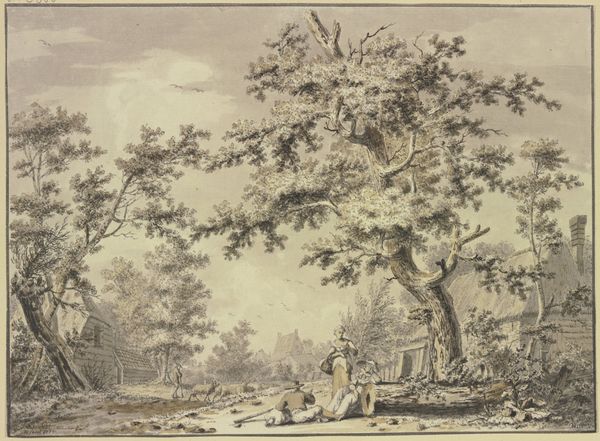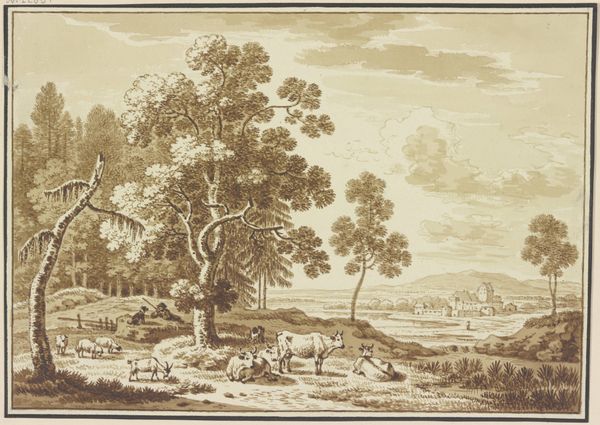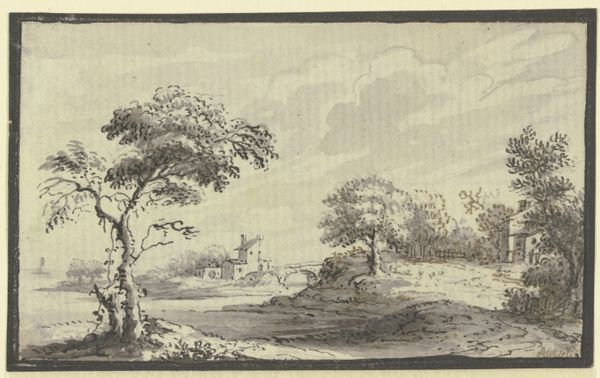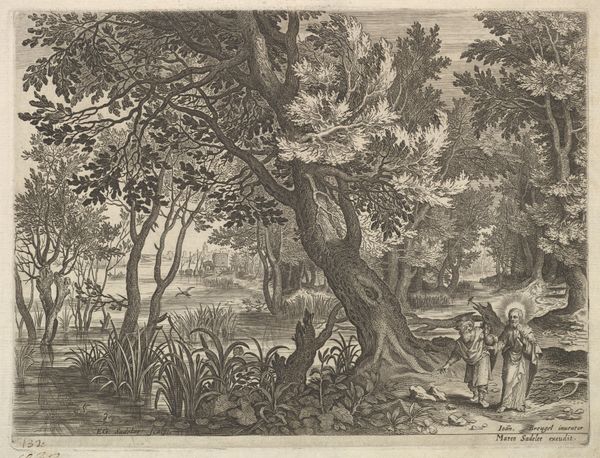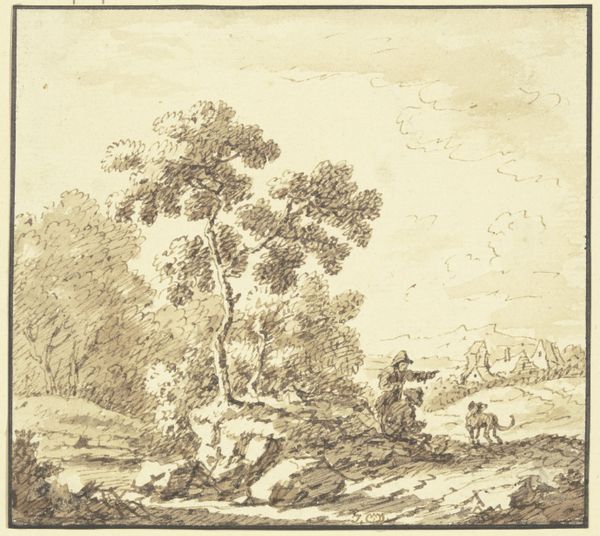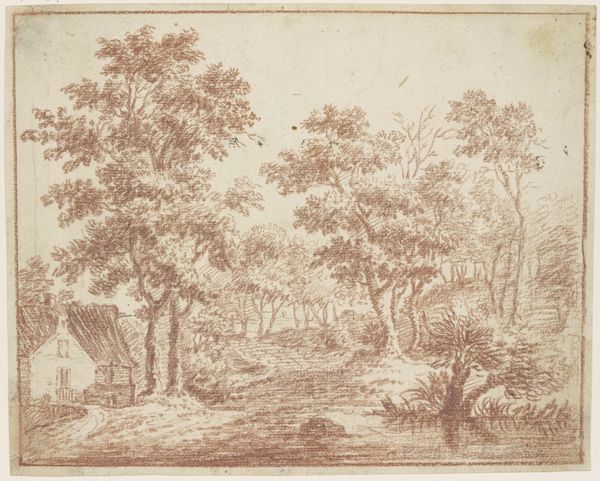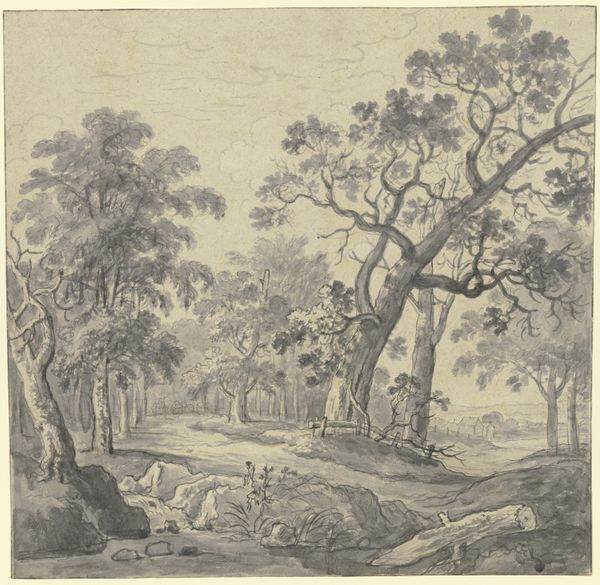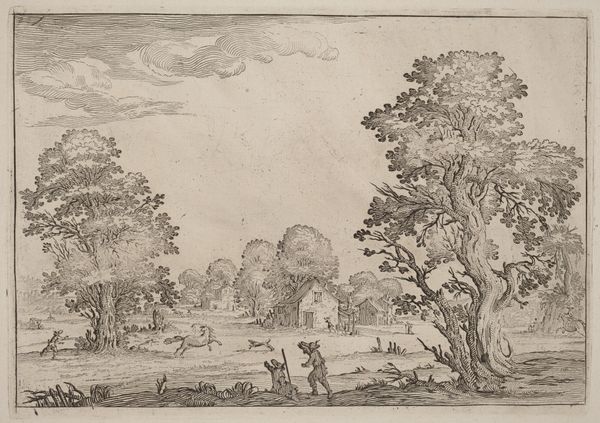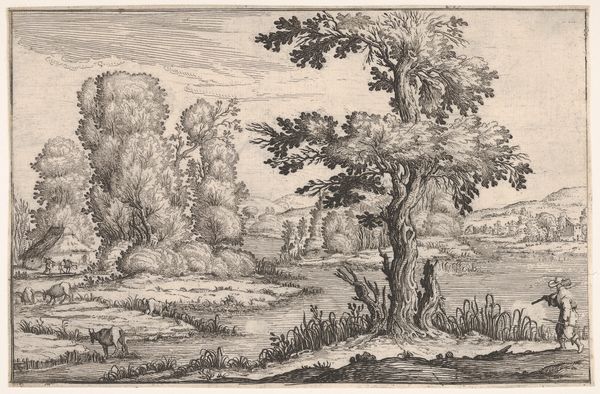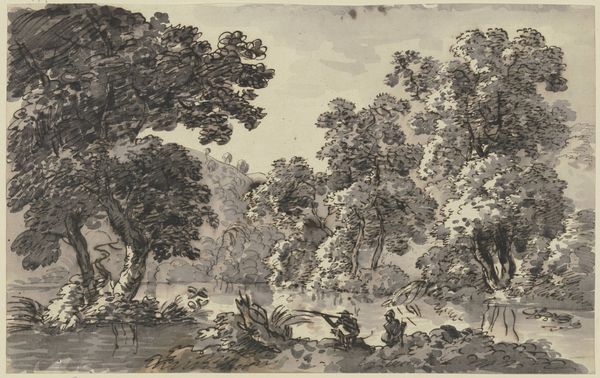
drawing, paper, ink, graphite
#
drawing
#
landscape
#
paper
#
ink
#
graphite
Copyright: Public Domain
Curator: Here we have "Weg am Waldrand, im Vordergrund eine große Eiche" which translates to "Path at the edge of the forest, with a large oak in the foreground", a landscape drawing rendered in ink and graphite on paper currently residing in the Städel Museum. Editor: There’s a strange tranquility to this piece despite the evident labor. The muted sepia tones lend an almost dreamlike quality, softening the image's potential starkness. It invites closer inspection. Curator: The composition is certainly intriguing, isn’t it? Hirt guides our eye using the placement of that prominent oak, dominating the left side, while simultaneously allowing depth to emerge on the right, revealing the landscape with other human figures within it. Note how skillfully the artist balances the detailed foreground with a more suggested background. Editor: That oak, it almost acts as a sentinel, doesn't it? Positioned slightly off-center, its form guides my eye, like you mentioned. Yet, it's not merely a picturesque backdrop, but very cleverly positioned within the image. One notices the figures laboring to travel in contrast to the sturdy tree. Curator: Considering its social context, depictions of landscapes in art became increasingly important reflecting changing societal values. Artists often captured not just the beauty of nature, but also documented the daily lives of people. This image could offer commentary of social issues too, given it includes the figures. Editor: And what a society it is. I find the visual interplay between those travelers, seemingly burdened by what they have to carry with them, adds to the weightiness of the composition. Are they simply on the road, or perhaps fleeing, perhaps displaced? It makes me wonder of those elements. Curator: Precisely. Perhaps these details enhance our experience but their importance lies not necessarily in a historical record, but in a powerful rendering. The drawing invites speculation without the need for absolute clarification, which aligns, structurally, with its open, rather indefinite use of line. Editor: It makes me ponder the tension between idealized representations of nature and the grittier realities of human experience back in the day. This work balances both elements. I came here wanting to assess lines, but leave reflecting about their journey! Curator: A worthy reflection, indeed. It reminds us that artworks, at their finest, offer space for both careful visual assessment and thoughtful meditation on life itself.
Comments
No comments
Be the first to comment and join the conversation on the ultimate creative platform.

